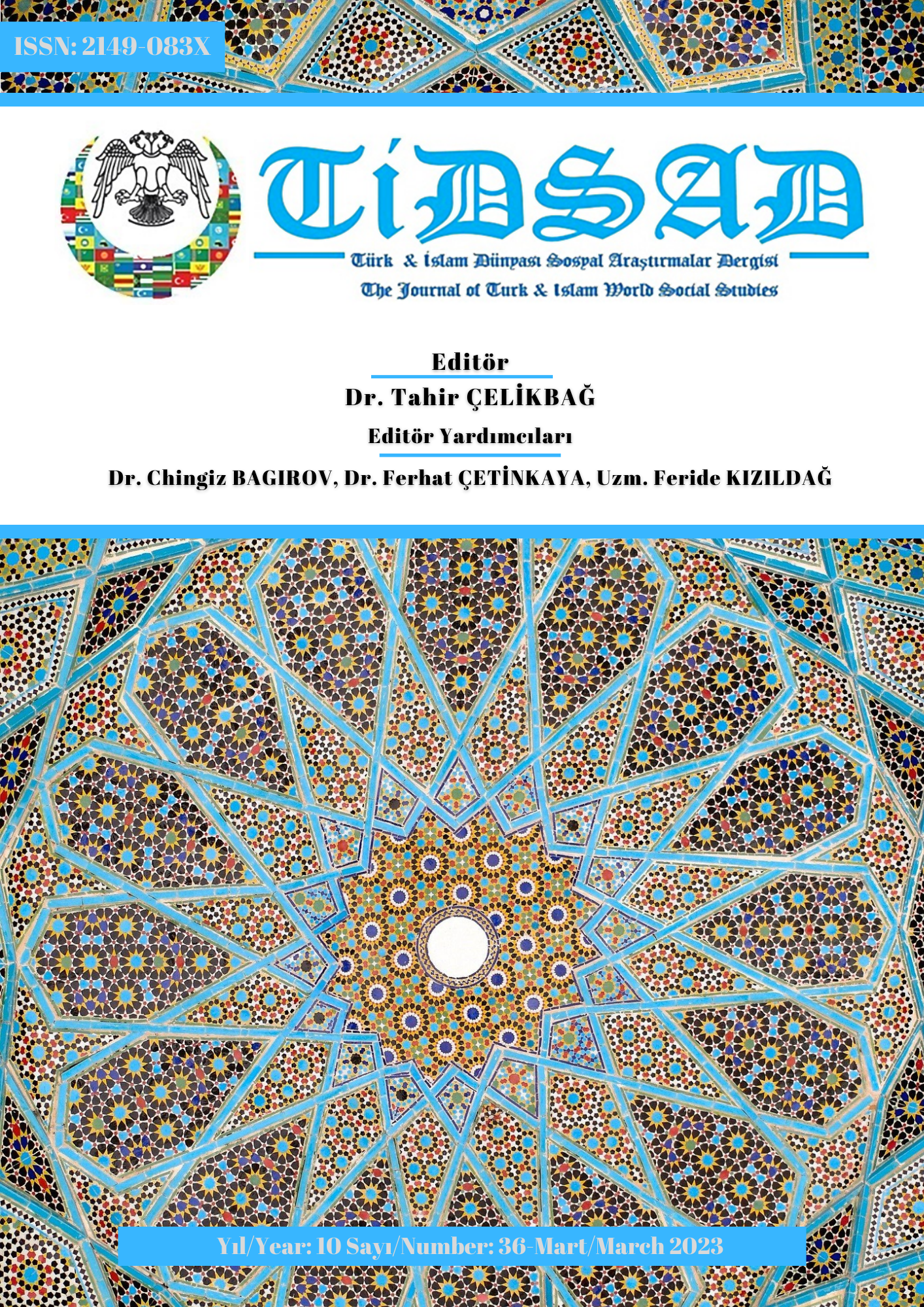Author :
Abstract
Dünyanın ilk oluşumundan bugüne kadar litosfer birçok farklı süreçten geçmiştir. Litosferde gerçekleşen her değişim kabuk üzerindeki olaylarla ilgili ipucu bırakmıştır ve bırakmaya devam etmektedir. Güncel veya eski bir jeolojik ve jeomorfolojik süreci, olayı veya özelliği ifade eden; kayaç, mineral, mineral fosil topluluğu, yapı, istif, yer şekli, gibi bilimsel değeri ve görsel estetiği yüksek oluşumları içeren arazi parçaları jeosit olarak tanımlanır. Jeositler; nadirlik, oluşan şeklin karakteristiği, erişilebilirliği vb. özellikler açısından diğer oluşumlardan ayrılmaktadır. Bulunduğu bölgenin litolojik yapısından, ikliminden, jeomorfolojik özelliklerinden etkilenen jeositler turizm açısından ve jeoeğitim açısından büyük öneme sahiptirler. Ümren Deresi, Uşak merkez ilçesi batısında Uşak-Manisa il idari sınırının geçtiği sahada bulunmaktadır. Dere, sularını Gediz Nehri’ne drene eder. Batısında Selendi Çayı havzası bulunmaktadır. Ümren Deresi Havzası, yaklaşık 68,8 km²’lik alana sahiptir. Havzanın temelinde Paleozoyik yaşlı Menderes Masifine ait metamorfitler onun üzerinde denizel çökeller, üzerinde Miyosen dönemine ait gölsel çökeller, en üst kısımda ise kuvaternere ait volkanizma olayları sonucunda oluşmuş volkanitler yüzeylenir. Anadolu’da badlands topografyasının en iyi gelişim gösterdiği yerlerden biri Ümren Deresi Havzası’dır. Havzada özellikle Çatal bayır yerleşmesinin kuzeyinde aktüel badlands topografyası bariz olarak seçilmektedir. Bitki örtüsünden yoksun Miyosene ait kalınlığı oldukça fazla az pekişmiş kumlu, killi gölsel Ahmetler Formasyonu’ndan oluşmuş eğimli yamaçlarda müsait klimatik şartlar altında tipik badlands topografyası gelişmiştir. Badlands topografyasını havzanın geniş bir kısmında görmek mümkündür. Sahanın kuzeyinde ve doğusunda uzanan Ulucak mesasını oluşturan kalkerler bu topoğrafyayı sınırlandırmaktadır. Badlands topoğrafyasının oluşmasında sahanın litolojisinin yanında klimatik özellikleri de etkilidir özellikle yağış tipinin payı çok büyüktür. Havza, Akdeniz ikliminden karasal iklime geçiş bölgesinde yani yarı kurak iklim sahası içinde kalmaktadır. Havza tipik badlands topografyası yanında kıvrımlı ve kırıklı yapılar, mesa, bütler, volkanik pişme zonu ve gölsel fosiller gibi çok sayıda jeolojik ve jeomorfolojik miras unsurlarını bünyesinde bulundurmaktadır. Ulaşım açısından uygun coğrafi konuma sahip Ankara-Uşak karayolunun geçtiği, Kula-Salihli Jeoparkı sınırları yakınındaki Ümren Dere havzasının bir an önce jeoturizme kazandırılması gerekmektedir.
Keywords
Abstract
The lithosphere has gone through many different processes since the first formation of the Earth. Every change in the lithosphere has left and continues to leave clues about the events on the crust. Expressing a current or old geological and geomorphological process, event or feature; A geosite is defined as a piece of land that contains formations of high scientific value and visual aesthetics, such as rocks, minerals, mineral fossil assemblages, structures, stacks, and landforms. geosites; rarity, characteristic of the formed shape, accessibility, etc. It differs from other formations in terms of features. Geosites, which are affected by the lithological structure, climate and geomorphological features of the region, are of great importance in terms of tourism and geoeducation. Ümren Stream is located in the west of the central district of Uşak, in the area where the administrative border of Uşak-Manisa passes. The creek drains its waters into the Gediz River. To the west of it is the Selendi Stream basin. Ümren Creek Basin has an area of approximately km². At the base of the basin, metamorphics belonging to Paleozoic aged Menderes Massif surface, marine sediments above it, lacustrine sediments belonging to Miocene period, and volcanics formed as a result of quaternary volcanism events at the uppermost part. One of the places where the badlands topography is best developed in Anatolia is the Ümren Creek Basin. In the basin, especially in the north of Çatal Bayır settlement, the actual badlands topography is clearly distinguished. Typical badlands topography has been developed under suitable climatic conditions on the slopes of Miocene-thick sandy, clayey lacustrine Ahmetler Formation devoid of vegetation. It is possible to see the Badlands topography in a large part of the basin. The limestones forming the Ulucak mesa extending to the north and east of the site limit this topography. Besides the lithology of the area, climatic features are also effective in the formation of the Badlands topography, especially the share of the precipitation type is very large. The basin is in the transition zone from the Mediterranean climate to the continental climate, that is, within the semi-arid climate zone. In addition to the typical badlands topography, the basin contains many geological and geomorphological heritage elements such as folded and fractured structures, mesa, butts, volcanic firing zone and lacustrine fossils. The Ümren Dere basin, near the borders of Kula-Salihli Geopark, where the Ankara-Uşak highway passes, which has a convenient geographical location in terms of transportation, should be brought into geotourism as soon as possible.





